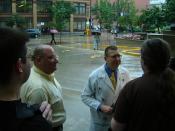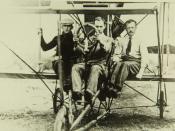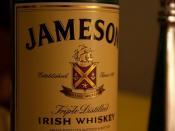In Postmodernism, Fredrick Jameson states that one constitutive feature of the postmodern is "the well-nigh universal practice today of what may be called pastiche". Without the old notion of personal style or innovation, the postmodernist artist is forced into imitating old styles, randomly sampling images and combining them into an overstimulating ensemble (18, 19). The greater accessibility of digital media makes an overwhelming palette of film, photographs, and text available for use. Dead actors like Fred Astaire and John Wayne appear in new commercials for vacuums and beer. The 3-season experimental child Star Trek grows up and has innumerable progeny that can parody its 1950's vision of the future. In a cultural environment based on the marketable, malleable tastes of postmodern consumers, what sells, is artistically viable. To make a movie out of the TV series Lost In Space takes a whole lot of pastiche. Black and white, technically dry, and smelling like the Sixties, the old CBS series is long dead and with episodes like "The Wild Child of Avergnon Meets the Robinson's", it's no wonder.
At 2:30 A.M. after Hogan's Heroes, Matlock, and Rhoda, The Nickelodeon TV Network still plays reruns of the old Lost in Space and a few Americans watch it. Given the success of sci-fi in general, this classic was a prime candidate for a face-lift and a makeover a few years ago.
Postmodern viewers are far too sophisticated for the "Wild Child" story to be appealing (not really, the topic just sounds dull to us) so an easily digestible plotline is key. A pastiche of elements from past films illuminates the characters without spending too much time on them and makes them accessible to all viewers. In the opening scene, Matt LeBlanc's character is introduced as he executes a stock "risk your life and...


